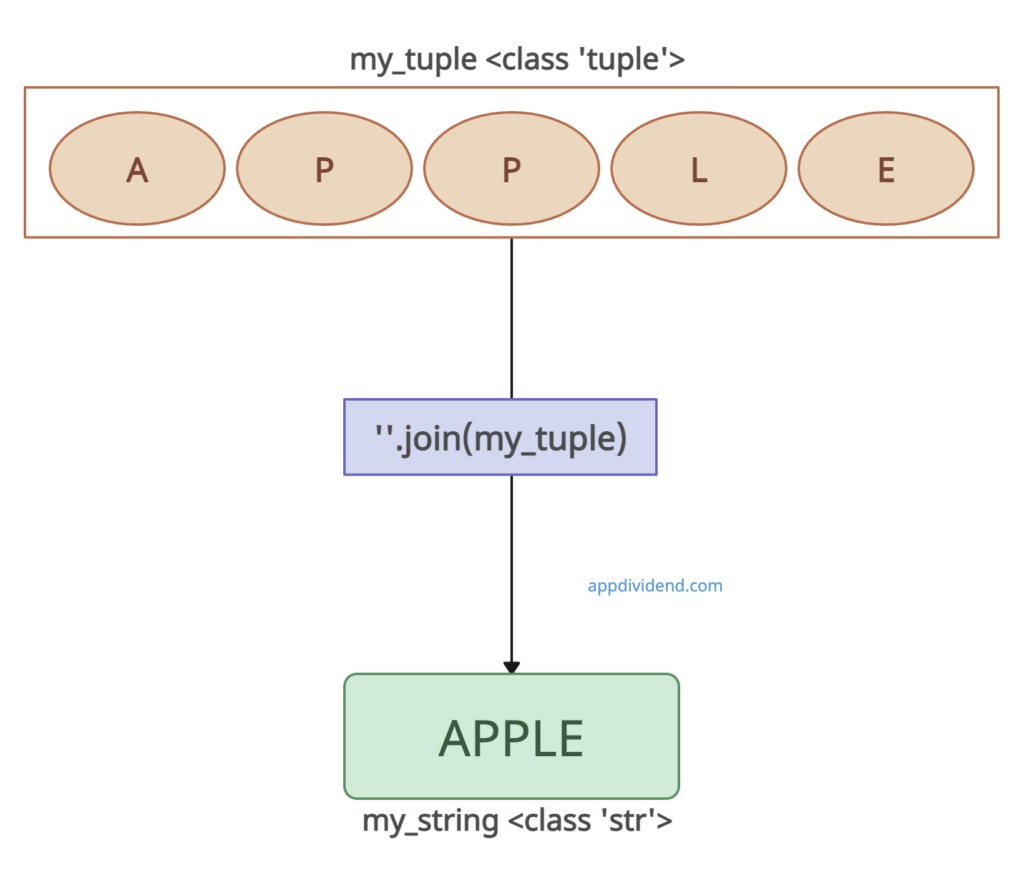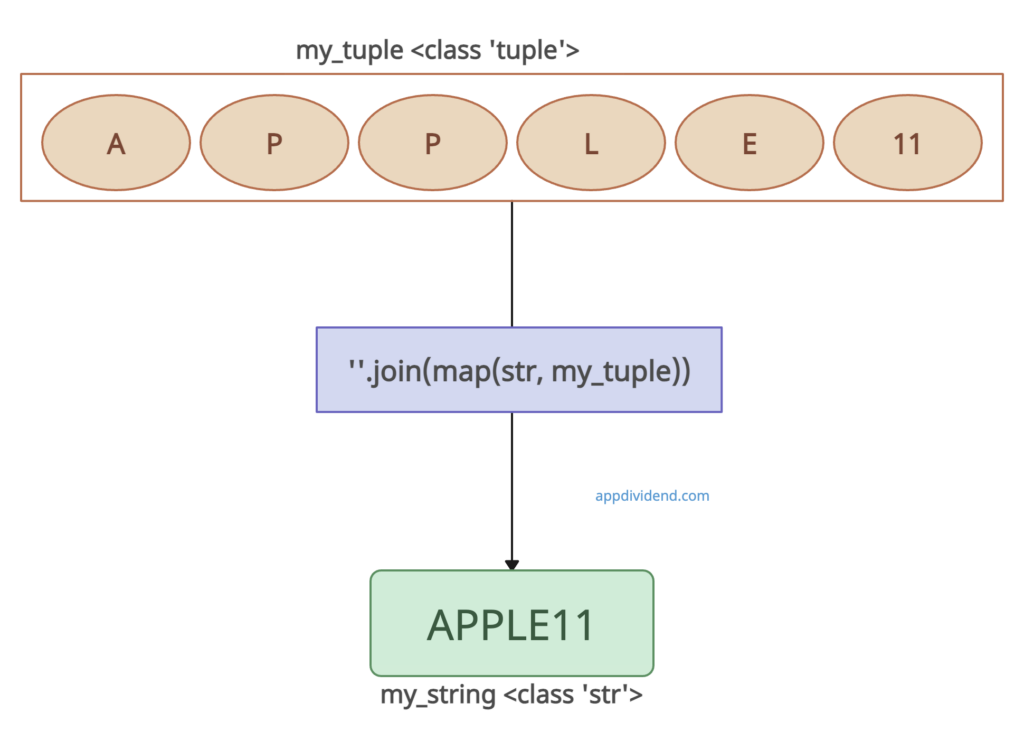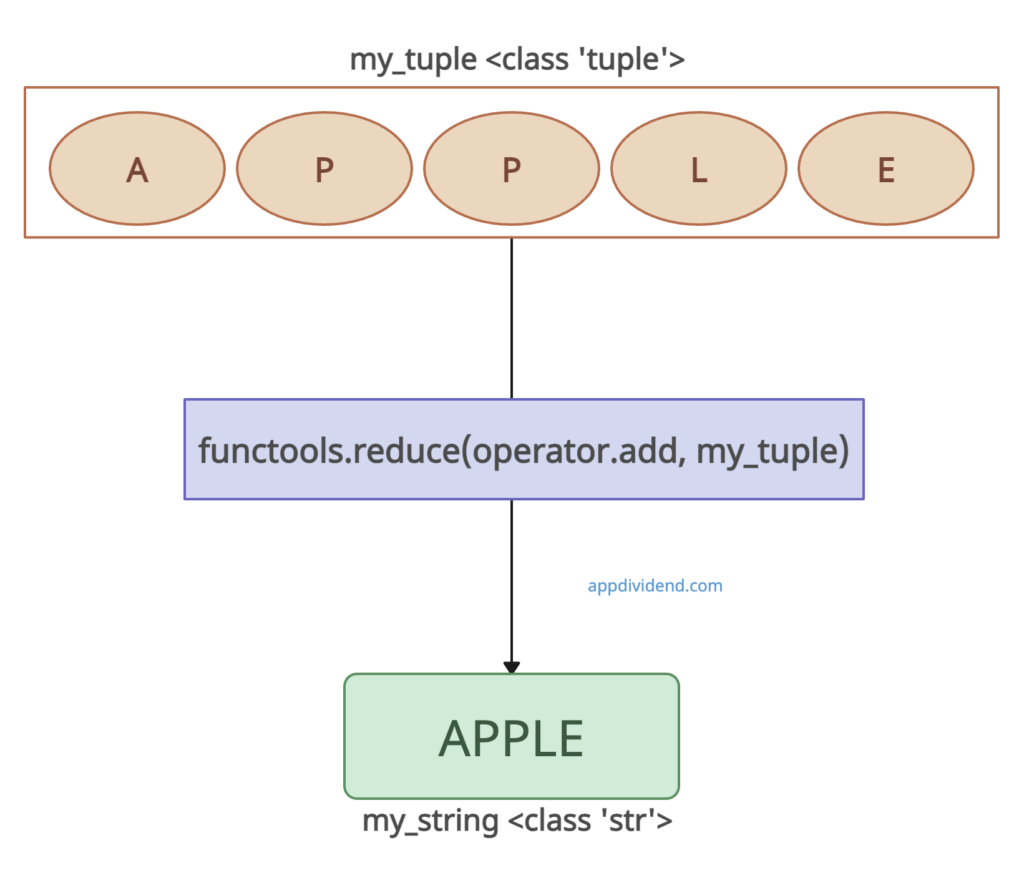Here are five ways to convert a tuple to a string in Python:
- Using string.join()
- Using a For Loop
- Using map() with join()
- Using functools.reduce()
- Using List Comprehension
Method 1: Using string.join()
The join() method is used to concatenate the elements of the tuple into a single string.
Visual Representation
Example
my_tuple = ('A','P','P','L','E')
print("=== Before Conversion === ")
print(my_tuple)
print(type(my_tuple))
my_string = ''.join(my_tuple)
print("=== After Conversion === ")
print(my_string)
print(type(my_string))Output
=== Before Conversion ===
('A', 'P', 'P', 'L', 'E')
<class 'tuple'>
=== After Conversion ===
APPLE
<class 'str'>Method 2: Using a For loop
You can use a for loop to iterate over each element in the tuple, and then append it to the string.
Example
my_tuple = ('A', 'P', 'P', 'L', 'E')
print(type(my_tuple))
my_string = ''
for item in my_tuple:
my_string += item # If the tuple has mixed data types, then first convert to a string with str(item)
print(my_string)
print(type(my_string))Output
<class 'tuple'>
APPLE
<class 'str'>This approach is not recommended as it requires iteration, which can be time-consuming for large tuples.
Method 3: Using map() with join()
The map function is used to apply the str function to each element in the tuple, converting all elements to strings.
This method is particularly useful for tuples with mixed data types.
Visual Representation
Example
my_tuple = ('A', 'P', 'P', 'L', 'E', 11)
print(type(my_tuple))
my_string = ''.join(map(str, my_tuple))
print(my_string)
print(type(my_string))Output
<class 'tuple'>
APPLE11
<class 'str'>Method 4: Using functools.reduce()
The reduce function applies the add operator cumulatively to the items of tuple from left to right, concatenating them into a single string.
Visual Representation
Example
import functools
import operator
my_tuple = ('A', 'P', 'P', 'L', 'E')
print(my_tuple)
print(type(my_tuple))
my_string = functools.reduce(operator.add, my_tuple)
print(my_string)
print(type(my_string))Output
('A', 'P', 'P', 'L', 'E')
<class 'tuple'>
APPLE
<class 'str'>Method 5: Using List Comprehension
The join() method is used with a list comprehension to concatenate the strings.
Example
my_tuple = ('A', 'P', 'P', 'L', 'E')
print("=== Before Conversion === ")
print(my_tuple)
print(type(my_tuple))
my_string = ''.join([item for item in my_tuple])
print("=== After Conversion === ")
print(my_string)
print(type(my_string))Output
=== Before Conversion ===
('A', 'P', 'P', 'L', 'E')
<class 'tuple'>
=== After Conversion ===
APPLE
<class 'str'>If you prefer not to use list comprehension, you can also use a generator expression to achieve the same output.




